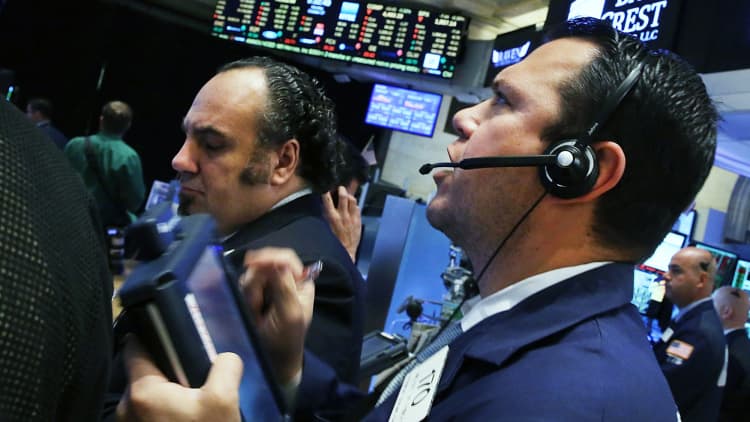
I noted Tuesday that traders have come to accept that markets are almost invariably up during the two days leading up to an FOMC announcement. My informal trader poll indicates the vast majority believe the Fed will end QE3 and leave in place its statement that interest rates will remain low "for a considerable period."
They point to recent comments from New York Fed President William Dudley and Chicago Fed President Charles Evans, who have mentioned below-target inflation as a near-term risk, which would argue for continuing low rates.
That might point to a selloff right after the Fed announcement. That likely will happen, but again most traders seem to feel any dip will be short-lived.
Everyone is living and breathing "seasonality," passing around statistics. The week before midterm elections, markets are up 75 percent of the time since 1982. Since 1928, the S&P has been up in November and December 88 percent of the time. And 25 percent of all buybacks occur in November and December.
On the earnings front, oil companies are shy about projecting oil prices in the fourth quarter and 2015. Hess noted that lower realized crude oil prices were the primary reason adjusted net income declined. Average selling prices for crude were down 8 percent from a year ago, and that includes the effects of hedging.
But most oil companies are shying away from comments about where oil prices will go. Phillips 66 also reported a beat but was generally quiet about where oil will be trading in the fourth quarter.
There are still many other oil companies to report, but so far there have been no major changes in capital expenditures. Oil producers are hopeful oil will drift back up into the $90s. However, that may be a pipe dream. Analysts are bringing down estimates for Q4 since the consensus estimate for crude seems to be in the low $90s for West Texas Intermediate, about $10 higher than the current price.
Want an indication that investors are less worried than they were a week ago? Look what happened to Wednesday's initial public offering, Shell Midstream. Shares priced at $23, well above the price talk of $19 to $21, and the company raised the shares offered from 37.5 million to 40 million. That means Shell Midstream raised 23 percent more money than the midpoint pricing expected. At $920 million, this is the largest master limited partnership IPO of 2014, according to Renaissance Capital.
That is a great relief, and an indication that demand for these pipeline MLPs is still strong. A 2.8 percent initial yield also helps.
These MLPs, despite a big dip a few weeks ago with the other energy plays, have generally been among the hot IPOs this year.
Dominion Midstream raised $368 million on Oct. 14, and it's up 40 percent. CONE Midstream raised $385 million Sept. 24 and shares are up 32 percent. Enable Midstream raised $500 million on April 10 and its stock is up 22 percent.
Speaking of IPOs, that's another business that has turned around in the last few days. Renaissancee Capital's IPO ETF has rallied all the way back after dropping more than 10 percent in mid-October, helped by its largest holding, Alibaba, which will report earnings on Nov. 4.
Elsewhere:
Marriott reported good numbers with revenue per available room up 9 percent, occupancy at 77.6 percent and room rates up 5 percent. More people in the rooms, and raising rates? Wow. Marriott hit a record high stock price on the news.
Eaton, one of the big producers of electrical products, electrical systems and auto drivetrains, reported a modest beat on earnings, but it is one of the few multi-industry companies to specifically comment on business outside the United States. Outside North America, Eaton projects growth of 2 percent in 2014, down from 3 percent. The company generates about a quarter of its sales in Europe.


